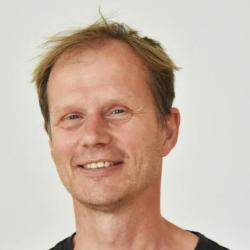
Propagation of regularity for solutions of the transport equation with non-Lipschitz velocity field and their applications
2:00 pm
4122 CSIC Building
Prof. Quoc Hung Nguyen, Institute of Mathematical Sciences, Shanghaitech University
Since the work by Di Perna and Lions (’89) the continuity and transport equation under mild regularity assumptions on the vector field have been extensively studied, becoming a florid research field.
The aim of this talk is to give an overview of the quantitative side of the theory, focusing mostly on the problem of propagation of regularity for ODE flows and solutions to the transport equation and the advection diffusion equation. We present recent results, examples, applications and open problems. This is based on joint works in collaboration with Elia Bruè.
Solving the wave equation: acoustic scattering in the time domain
2:00 pm
4122 CSIC Building
Prof. Paul Martin, Department of Applied Mathematics and Statistics, Colorado School of Mines
Transient acoustic waves are generated or scattered by an obstacle. This leads to initial-boundary value problems for the wave equation. Recent studies usually assume that the solution is smooth. However, many interesting physical problems lead to non-smooth solutions: there are moving wavefronts. These situations are usually handled by seeking weak solutions, but care is needed to ensure that constraints imposed by the underlying continuum mechanics are respected. We investigate some of the consequences, with a focus on the benchmark problem of scattering by a sphere.
Patterning through growth
2:00 pm
4122 CSIC Building
Prof. Arnd Scheel, School of Mathematics, University of Minnesota
I will survey recent work on pattern formation in the context of growth. Descriptions of pattern formation often start in a scenario of uniform quenching, where spatial structure emerges from a spatially constant state which is destabilized by a sudden change of a parameter. Patterns are often incoherent, marred by many defects, and difficult to predict in this scenario. In many scenarios, the formation of patterns is accompanied by a growth process, where for domain occupied by patterns grows in space, or the spatial domain itself grows in time. I will demonstrate how such growth processes act as a selection mechanism for patterns, how patterns arising in such contexts are often much more coherent, and how very simple systems that lack the ability to provide long-range spatial order form coherent crystalline phases in such a growth scenario.
Boltzmann-type collision operators for Bogoliubov excitations of Bose-Einstein condensates
2:00 pm
4122 CSIC Building
Prof. Minh Binh Tran, Department of Mathematics, Southern Methodist University
Starting from the Bogoliubov diagonalization for the Hamiltonian of a weakly interacting Bose gas under the presence of a Bose-Enstein Condensate (BEC), we formally derive the kinetic equation for the Bogoliubov excitations. Without dropping any of the commutators, we find three collisional processes. One of them describes the 1 ↔ 2 interactions between the condensate and the excited atoms. The other two describe the 2 ↔ 2 and 1 ↔ 3 interactions between the excited atoms themselves. This is joint work with Yves Pomeau (ENS Paris).





